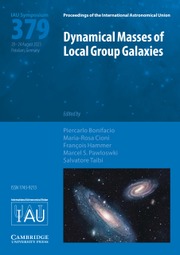No CrossRef data available.
Article contents
Spectroscopic monitoring of V Hydrae: a binary eclipsed by a jet?
Published online by Cambridge University Press: 06 October 2025
Abstract
The carbon-rich star V Hydrae is known to be in its transition from the asymptotic giant branch phase to a bipolar planetary nebula. However, the origin of its bipolar shape, as well as its long-term periodic obscuration, are not well understood. Using high-resolution spectra from the HERMES/Mercator spectrograph spanning over 10-yr monitoring, we disentangled the orbital signal from the intrinsic Mira-like variations of V Hya. The orbital solution obtained is compatible with the light-curve modulation, which we interpret as an obscuration caused by an extended dusty environment surrounding the unseen companion. Additionally, we report high-velocity phase-dependent absorption features in the sodium doublet and explain them by the presence of a conical jet ejected from the (accretion disc of the) companion. We confront our binary scenario with previous radio observations and discuss how this jet could shape the large-scale bipolar outflow of the system.
Information
- Type
- Contributed Paper
- Information
- Proceedings of the International Astronomical Union , Volume 19 , Symposium S384: Planetary Nebulae: A Universal Toolbox in the Era of Precision Astrophysics , December 2023 , pp. 366 - 369
- Copyright
- © The Author(s), 2025. Published by Cambridge University Press on behalf of International Astronomical Union


